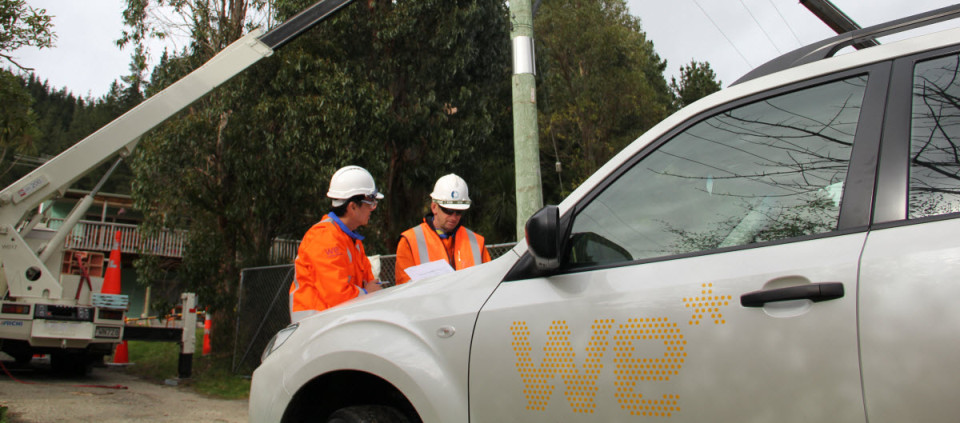If you need power while we maintain or fix our network, you can use a generator to provide a temporary supply of electricity.
We can't guarantee an uninterrupted supply of power on our network, so it's important that our consumers know what to do if they need to use a generator to provide themselves with a temporary source of power. This page provides information on how to safely do that.
Power outages can happen for a number of reasons:
- Planned outages are scheduled so that work can be safely completed to maintain or improve our network.
- Unplanned outages can be caused by anything from cars hitting our poles, debris flying into our overhead lines, or people hitting our underground cables with digging equipment.
Making sure our crews and members of the public are safe is our number one priority, so sometimes we might have to delay making repairs to our network until it’s safe to do so.
Types of Generators
Portable generators can be moved from site-to-site and are intended to be used to directly supply appliances. A portable generator should NOT be connected directly to a property’s mains electrical system because it could feed electricity back into our network and risk the lives of field crew. Care should be taken to ensure that the generator selected is suitable for the expected electrical load. For example, an electric kettle can use 2,400VA so a 650VA generator would be too small to power it.
Standby generators are designed to provide large amounts of power and are typically used in business or commercial operations. Standby generators are connected directly to the premises' electrical system.
⚠️ You must follow our distributed generation application process if you're planning to install a standby generator.
Safety Guide
For either type of generator, it’s always a good idea to seek advice from a registered electrician and/or generator supply specialist – for example, Electrical Mechanical Service Limited (027 569 8601) or Aggreko.
They can provide you with advice on what type of generator best suits your needs and may be able to help with the safe use and installation of a generator. For portable generators, you should:
- never use a generator indoors (you risk carbon monoxide poisoning from the fumes and could also cause a fire)
- never add fuel to a generator while it’s running
- never use damaged leads or appliances
- always use a safety switch designed especially for generators
- never connect all appliances at the same time (start with the largest and progressively add successive ones up to the generator's maximum output)
- never 'piggyback' cords – always use a multiple-outlet box with built-in load limiters.
Did you know?
- Powering a freezer might only require 700 watts, but could need as much as 2,200 watts for it to start. It pays to check with your electrician on what you can safely supply power for.
- Food in a freezer will usually remain frozen for 24 hours if the door is kept closed. Avoid the temptation to open it to check.
- If you use medical equipment that relies on electricity, inform your electricity retailer and have a plan in case of a power outage. If you need medical assistance, contact your healthcare provider or call 111 from a mobile phone in an emergency.
- A generator should never be operated at its maximum power output for more than 30 minutes. Most generators have a maximum rating in watts, for example 2,000 watts (two kilowatts).
- Where you want to run a generator might be subject to noise restrictions that limit its usage, particularly at night. You are legally obliged to keep noise to a minimum and may need to consult with your local council.




To help improve our service, what feedback can you give us about this page?